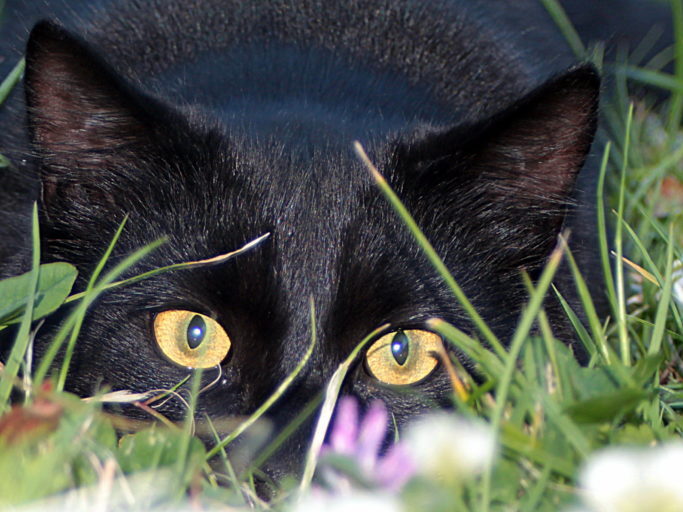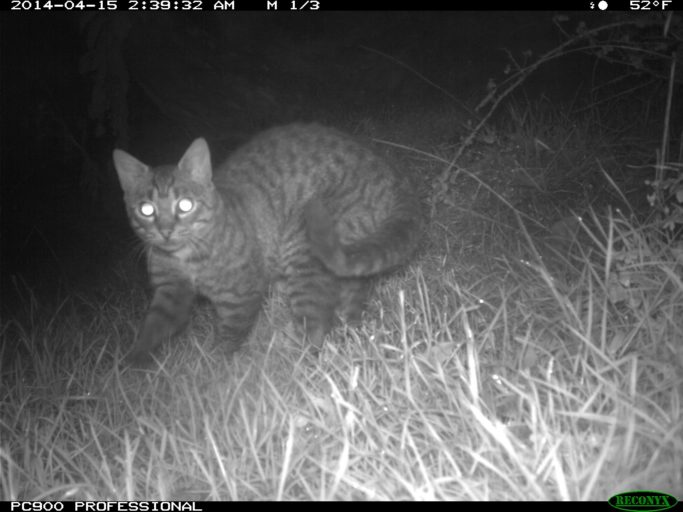ON THIS PAGE
How did cats get here?
Cats were one of the first introduced species to thrive in New Zealand.
They arrived with European ships in 1769 because cats were carried onboard to keep rat numbers down. Fifty years later, there was an established feral cat population.
Cats were then deliberately released in the 1870s in an attempt to control rabbit numbers.
Cats were introduced to 30 of New Zealand’s offshore islands but they have now been removed from over half of them.

What impact do cats have?
Cats are highly skilled hunters and are known to kill all kinds of native wildlife including birds, bats, lizards and insects.
Cats have been implicated in the eradication of many species, including the Stephen Islands Wren. There is also a well reported case where one feral cat killed 102 endangered native short tailed bats in one week.
Cats are an apex predator in Aotearoa — this means nothing preys on them and therefore we need to try and minimise their impact on our ecosystems as much as possible.
In our cities, native birds do not breed fast enough to stop the decline caused by domestic cats.
What do we know about cat behaviour?

Cats hunt regardless of hunger, so even well-fed cats can be destructive hunters. Studies show cats only bring home a fraction of what they hunt (approximately 25%). This means that even if there isn’t any proof of hunting it doesn’t mean that it isn’t happening.
Cats are solitary, skilled hunters that tend to hunt small mammals or insects, but can kill animals as big as rabbits. Their hunting is instinctive; they are carnivores, often eating food in small portions over a 24 hour period, resulting in up to 10-20 kills per day if they are not being fed by an owner.
While hunting, cats tend to stalk their prey and they don’t always kill immediately. Once killed, they may not eat their prey (particularly if they spot something more appealing or favour their commercial cat food).
How can you be a responsible cat owner?
Responsible cat ownership is important to help keep our native species safe. It includes microchipping cats, desexing, limiting the number of cats per household and keeping cats inside at home as much as possible.
Here are some things to consider:
- Microchipping and desexing are important steps of cat ownership. Desexing prevents any unwanted kittens and microchipping helps identify your cat as owned.
- Consider keeping your cat indoors or keeping it on your own property – there are some great options that allow your cat to explore your backyard without impacting native species e.g. cat enclosures or ‘catios‘. Raising an indoor cat is very common overseas and is increasingly becoming the norm in New Zealand. Cats are happy and healthy at home.
- If you’re not ready to keep your cat indoors all the time, keep your cat inside as much as possible but at least one hour before dusk and an hour after dawn — this is when our lizards are at their slowest and are easy prey for cats.
- Add bells to your cat’s collar — the more bells the better. Bells don’t completely stop hunting but they do minimise it. Bright, ‘scrunchie’ collars have also been shown to reduce hunting.
- Minimise the number of cats you own and consider not replacing your cat when it dies or replace it with a cat that is an indoor cat.
Controlling stray and feral cats
Strays and feral cats are a problem for our native wildlife and can also be a nuisance in other ways.
Controlling cats needs to be done as humanely as possible and live capture traps are one of the best tools available. Live capture traps also allow users to confirm if the cat is an owned domestic cat or not. Before you put a trap out, make sure you have a plan for what you’ll do once you’ve caught a feral cat – can you dispatch it humanely, will your local vet humanely euthanise it, or can your regional council help? If you have a problem with unowned or feral cats, we recommend you contact your regional council.

